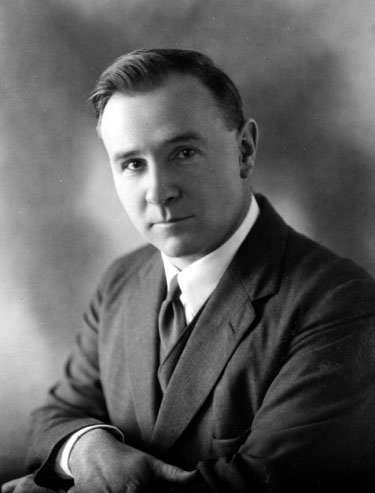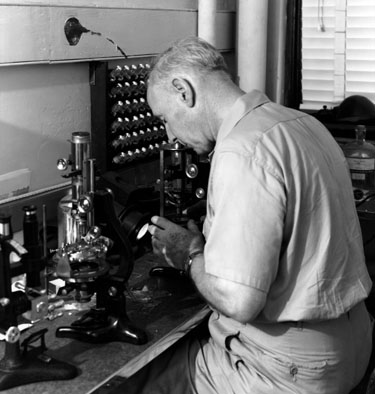
1887–1956
-
Geophysical Laboratory, staff member (1912-1918, 1920-1937, 1947-1952)
-
M. A., Queens University, 1907
-
B.S. in Mineralogy and Geology, Queens University, 1909
-
Ph.D. in Geology, Massachusetts Institute of Technology, 1912
-
D.Sc., Harvard University, 1936
-
D.Sc., Yale University, 1951
-
Mineralogical Society of America, fellow, president
-
Geological Society of America, vice-president, president
-
American Academy of Arts and Sciences
-
National Academy of Sciences
-
Bigsby Medal (Geological Society of London)
-
Penrose Medal (Geological Society of America)
-
Miller Medal (Royal Society of Canada)
-
Roebling Medal (Mineralogical Society of America)
-
Wollaston Medal (Geological Society of London)
-
Hayden Medal (Academy of Natural Sciences)
-
Bakhuis Rooseboom Medal (Royal Academy of Amsterdam)
|
Norman L. Bowen was the leading expert on igneous petrology in the twentieth century. No other individual had as profound or as lasting an effect on that particular field of science as he. Bowen wasn’t simply a great man. He was the great man of petrology. The first half of the 1900s witnessed a change to systematic, quantitative, experimental, and physicochemical work over extensive field observation for the study of igneous rocks. Bowen led this revolution in both theoretical and laboratory study. Bowen arrived at the Geophysical Laboratory in 1910 as a pre-doctoral student from the Massachusetts Institute of Technology. He was currently working on his thesis for a phase-equilibrium study of the system nepheline-anorthite. Bowen returned as a staff member for the Geophysical Laboratory in 1912 and remained connected to the institution for the rest of his life. This association was only interrupted twice: from 1918 to 1920, when Bowen served as a guest professor of Mineralogy at Queens University and from 1937 to 1947, when he taught at the University of Chicago as the Charles H. Hutchinson Distinguished Service Professor of Petrology. |
|||
|
|
|||
|
|||
|
|
|||
|
Bowen followed up his 1915 paper and reaction series study with his most famous book in 1928, The Evolution of the Igneous Rocks. The work was based on a series of lectures Bowen gave to students at Princeton University in the spring of 1927. Although written over half a century ago, the book is still a definitive work on the basic concepts of magmatic differentiation and igneous petrogenesis. Bowen was intensely involved in determining the origin of granite, which was one of the most disputed and contentious problems of geology in the twentieth century. One school of thought believed that granite was a production of magma. The opposing school argued that granite formed from changes in metasedimentary or volcanic rocks. Bowen led the “magmatists” school and participated in countless lively and heated debates about the subject Throughout his career, Bowen made a point to conduct yearly field expeditions to analyze rocks in their natural environments. These trips allowed him to explore and study the Bushveld complex of South Africa, the alkalic lavas of East Africa, the peridotites of Skye, the Adirondack and Canadian anorthosites, and various other petrologic locations across the United States. Most of Bowen’s later publications were written in co-authorship with his Geophysical Laboratory colleagues. He worked primarily with J. F. Schairer from 1929 to 1956 and O. F. Tuttle from 1949 to 1956. Tuttle remembered his time spent working with Bowen as “the most interesting, inspiring, and happiest of my professional life.” Bowen retired from the Geophysical Laboratory in 1952 and moved to Clearwater, Florida for a year. Retirement, however, didn’t sit well with him, as he returned to the Laboratory in Washington and held an office there until his death. Arthur L. Buddington remembered Bowen best as “a quiet unassuming man who had the deep loyalty of all his friends and who was in turn loyal to them and to the institutions he served. He was one of the great scientists of his time whose contributions will in part be carried forward as essential elements in the sciences of petrology and geochemistry.” For more information about Norman L. Bowen and petrology at the Geophysical Laboratory, please see Experimental Petrology's Long Road to Respect. |
|||
|
|
|||
|
References:
Further Reading:
|

